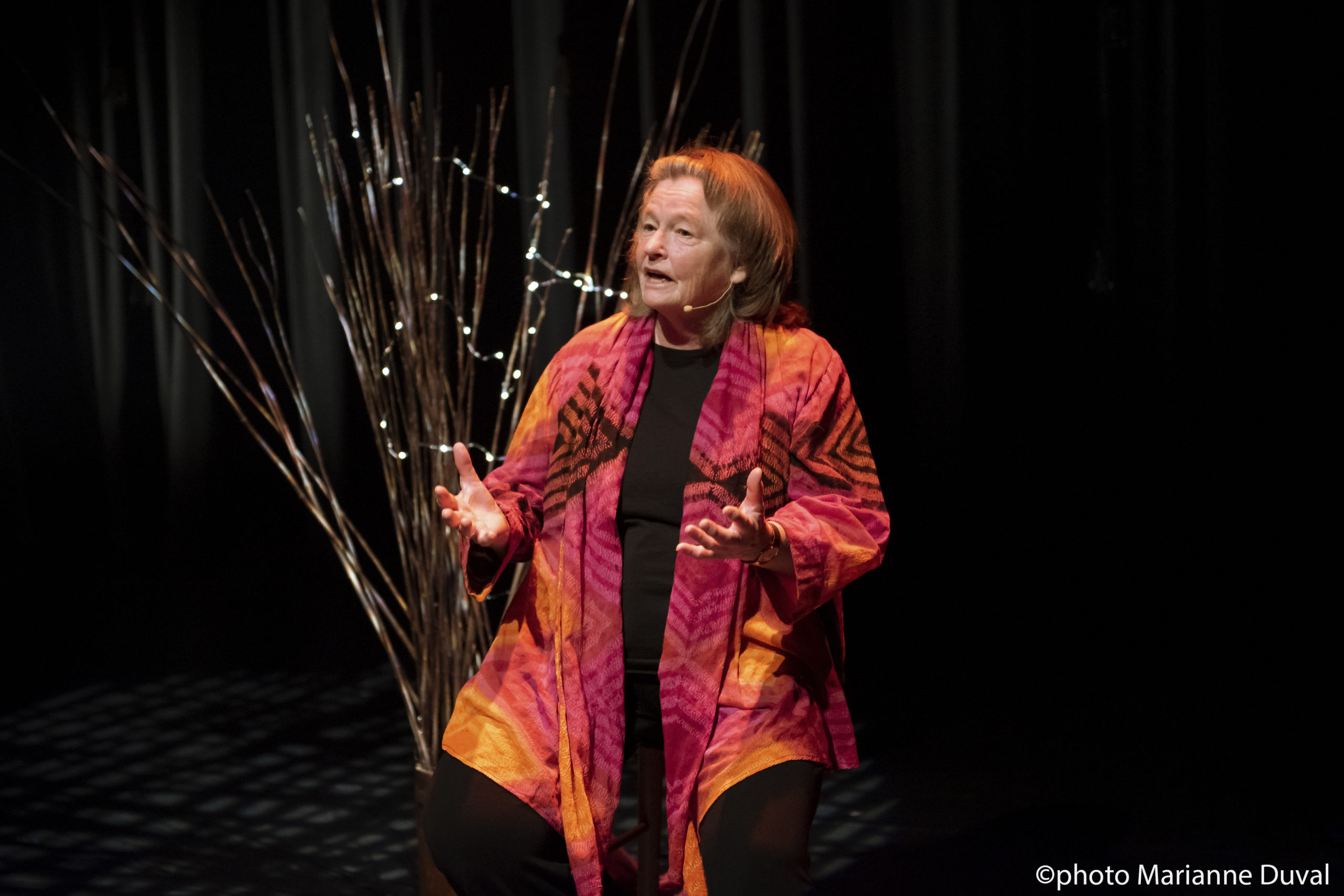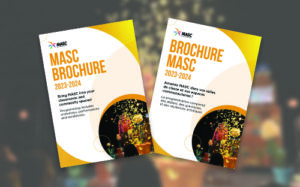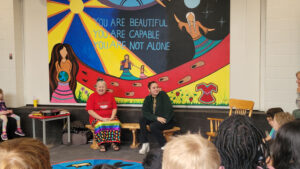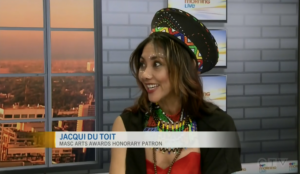Interview: Jennifer Cayley believes in the magic of storytelling and the power of art
By Jessica Ruano | January 3, 2022

This interview was originally published on Apt613.ca
Arts education has been a critical part of Jennifer Cayley’s life work, both as co-founder of MASC and as a teller of tales in community and educational settings. She has told stories in schools, libraries, community centres, and performance festivals across the country. Here, Jennifer talks about the magic of storytelling and her dreams for the future of MASC.
MASC: Jennifer, 30 years ago you co-founded an organization that today represents a roster of 138 professional artists and brings the arts and culture alive for over 120,000 children, youth, teachers, and seniors each year. How chuffed are you feeling right now?
Short answer: Very chuffed.
Slightly longer answer: It is wonderful to see how the organization has flourished and grown over the years. There’s an old Japanese saying about how teachers can be measured by the extent to which their pupils surpass them. I feel like the work I did at MASC is validated by the skill and dedication of the team guiding the organization now. Also, the extent to which MASC brings exceptional artists together with so many people in the community has grown significantly in depth and reach since I left.
Jennifer Cayley in her element. Photo provided by the artist.
As an oral storyteller, you continue the tradition of perhaps the longest-standing form of live entertainment. If you were to tell “the story of storytelling,” how would it go?
Stories go way back before Homer to a time when people needed to share and remember all manner of information, both practical, spiritual, and just plain entertaining. It was easier to hold all this information in your head if it was story-shaped. Literacy only began to be important for a significant number of people about 300 years ago. So for thousands of years, oral stories were passed on generation to generation, travelled with people as they moved about the globe, met and married other stories, and were the principal way humanity held onto what was important.
As literacy grew, the oral traditions weakened, until now in places like Canada, very few people know or value the old stories. Popular culture is filled with echoes of them, but books and writing and now technology have taken their place as teachers and tradition-keepers. Technology has enabled more oral experience, like podcasts and audio books, so I can only hope this might encourage people to explore the old oral traditions as well.
You have said that stories give audiences an opportunity to “conjure” as they listen. What does this mean to you? And what do you think it takes to weave magic as a storyteller?
When I tell a story, the listener may not need to do the hours of preparation I do, but while the story is being told, they need to work as hard as I do. I’m not in costume, I’m not much to look at, usually there’s no music. All I am offering is a bunch of words. It doesn’t become a story until listeners bring their own ideas, their own life experiences, their own feelings into play. I throw out the words like a conjurer’s ball. Each listener takes that ball into the ether of their imagination, adds some of their own balls and creates a very particular pattern, rhythm, meaning that is theirs and theirs alone.
It is the teller’s responsibility to find or create really good material, to do the preparation that enables the story “to leap off the page.” Perhaps most importantly, the teller must be absolutely present, so that the story is happening right now and right here. This means that, in a way, the teller doesn’t know, any more than the audience does, what will happen next.
“Creativity is a fundamental part of being human,” Cayley says. Photo provided by the artist.
Why do you think it’s important for our local community to have access to professional artists?
Creativity is a fundamental part of being human. Even so, this is not a time or a culture that affirms the importance of creative development in everybody. It is only really valued for artists or those whose creativity is thought to be making an exceptional contribution. MASC gives people an opportunity to value and develop this essential creative aspect of their humanity. Culturally diverse arts experiences are also a very effective way to build understanding across cultural, social, racial, and economic differences, something that is sorely needed today.
Professional artists who believe passionately in the power of their particular art form and have an abiding commitment to sharing that passion are often the best people to inspire creative work in others. The arts community also benefits from the income community work provides, which contributes to making it sustainable for artists to live and work in the region.
What do you imagine for MASC over the next 30 years?
I, of course, am full of dreams for MASC! Overall, I’m expecting more of the same good work. And I want MASC’s reach to expand so that many more people will experience the delights and the creative challenges of working with a MASC artist or seeing a fine performance.
Some of my concrete dreams are:
• Every school in the region, regardless of socio-economic profile, having experiences and inspiring performances with a MASC artist every year.
• MASC artists working in many seniors’ programs and residences.
• More artists making a significant portion of their income through MASC work as it expands.
• More discipline-specific special events.
• Ever-growing partnerships with community organizations, school boards, and other arts organizations
• Opportunities for artists to develop community programs with scientists, engineers, architects, athletes, doctors; the potential for creative partnerships is endless.
• Artists’ residencies that last months or even years.
• The ability for MASC to commission new work from artists.
• MASC artists offering more professional development opportunities in arts education to teachers and community workers.
• Significant ongoing corporate funding and a few well-resourced patrons to increase sustainability and encourage growth and innovation.
For more information about Jennifer Cayley and other MASC artists, please visit the MASC website and follow them on Facebook, Twitter, and Instagram.
Latest News
View All Articles



